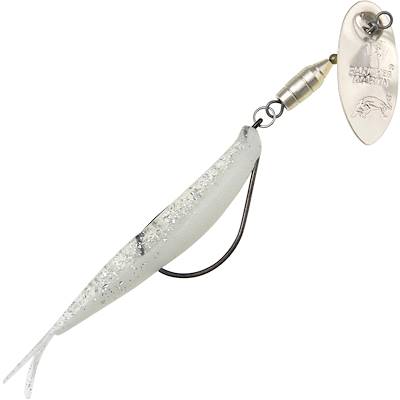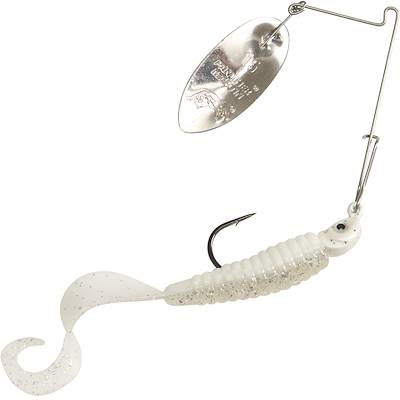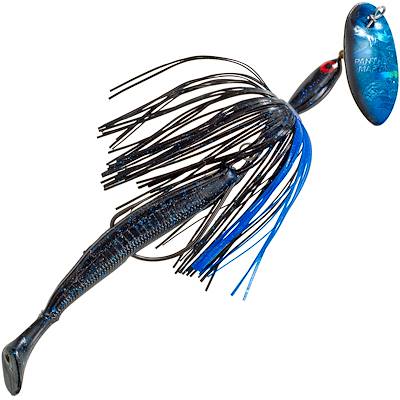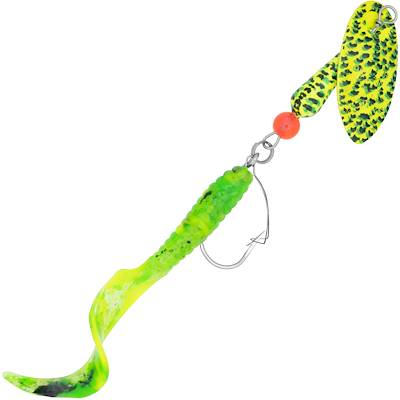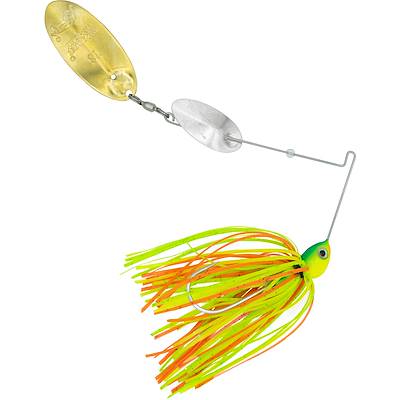Panther Martin Snook Fishing Guide
Snook
Introduction
A favorite of surf-casters, bank fishermen and inshore boaters alike, snook are a relatively aggressive species that patrol shallow coastal waters, estuaries and brackish lagoons but can also slide far inland up rivers, canals and tidal creeks due to their ability to tolerate freshwater for substantial periods of time. Technically speaking, there are a dozen distinct species of snook that inhabit tropical and sub-tropical waters in the Americas, six found in the Atlantic and six found in the Pacific.
Easy to identify, snook have a pronounced lower jaw and dark black lateral line. Their back and flank colors can vary somewhat from gold or silver to sandy brown or even olive green. They are serious predators but will also forage on crabs, shrimp, shellfish and similar bottom fodder. Their propensity to favor live baitfish makes them a natural target for sport fishermen. Beware the sharp gill plates when handling and releasing these fish – they can easily slice a careless hand.
Snook cannot tolerate water temperatures that dip much below the 60-degree mark, and die-offs occasionally occur when large numbers of fish holding in shallow waters are caught in a sudden, sharp cold snap. To protect snook stocks from such calamities, and to prevent overfishing of the species, populations are highly regulated so be sure to check the rules before heading out in search of this tasty and hard-fighting fish.
General Tips
- Snook love shallow structure. Be sure to take a few casts along rock walls, jetties, boulder piles, bulkheads, dock pilings, and bridge abutments.
- Snook feed with quiet abandon after dark. Target them on moving tides along shadow lines. Don't overlook very shallow water for snook. They will cruise into 6 inches of water and put their noses tight against the bank.
- Snook are attracted especially to boat or backyard decks with underwater lights.
- Larger snook often patrol the surf, inlet areas and pinch points where currents are forced to speed up such as under small cement bridges. Look for the biggest fish to cruise in troughs just beyond the breakers or in channels leading into and out of significant estuaries.
- If you have experience catching striped bass in shallow water, expect snook to act in similar ways during both daytime and late night feeding forays.
- In very shallow estuarine environments, snook move up onto the flats and closer to the shore on rising water. As the tide recedes, expect them to back off and reposition in nearby channels and drainages.
- The biggest snook in saltwater areas are often caught on full moon and new moon tides when strong currents favor the most powerful predators in prime feeding areas.
- In deeper channels and inlet areas, expect large snook to take advantage of ebbing tides that pull baitfish and crustaceans from the shallows creating a natural chum slick
- Snook tend to feed best at the start and end of any moving water. Consider the beginning of falling tides to be the best starting point for fishing inlets, channels and moderate to fast-moving water.
- Kayaks are great for quietly approaching shy stripers in back bays, rivers, tidal creeks and shallow flats.
Catching Snook
- For school snook in shallow or back-bay waters, gently flowing tidal creeks, streams and rivers a @Html.LureGroupActionLink("Panther Martin \"Big Eye\" Vivif Swimbait", 95) is a great choice.
- Panther Martin Vivif swimbaits come in a variety of shapes and sizes. Note the profile of predominate baitfish and choose the swimbait style that appears to be the closest match.
- For tidal creeks with moderate current, cast for stripers with a Sonic SizzleTail Silver White Ice or Silver Root Beer.
- During river and tidal creek slack tides, slower tidal stages or when weeds are an issue, toss a WeedRunner in Gold White Ice, Silver White Ice or Silver New Penny to entice neutral fish. Retrieve just fast enough to keep the blade spinning
- When fishing along dockside shadow lines after dark for late-night snook, a jet black with red eyes Vivif can draw impressive strikes. For fishing channel waters in daylight, a light colored Vivif is the way to go.
- The Sonic SizzleTail is a great lure for working back bay shallow flats. Reel it just below the surface to create a wake that large, aggressive snook can't resist.
- For weedy flats, fishing around eelgrass beds, and along sticky shoreline with mangrove roots, hanging brush and downed trees, the weedless WeedRunner is an excellent choice.
- Snook will often follow a lure for a while before striking, especially in flats situations. Continued reeling at a steady rate bring a hook-up but if the fish seems to be losing interest, a slight twitch or two of the rod-tip is often enough to trigger a strike.
- With both the Sonic SizzleTail and WeedRunner, be sure to lead moving fish by a considerable distance. Cast beyond a snook’s direction of movement to retrieve the lure so that passes at a right angle two to four feet ahead of the fish.
- Gold New Penny, Silver Root Beer, Silver White Ice and Silver Chartreuse Silver Flake are popular snook patters for both SizzleTail and WeedRunner style lures.
- When working shadow lines at night for snook, reel Vivif, SizzleTail, and WeedRunner lures as slowly as possible while keeping them within two or three feet of the surface. Holding your rod tip overhead may help your lure to ride high in the water column.
Snook Facts
- Snook are also known as robalo and sergeant fish.
- Three United States Navy submarines have been named after snook: the USS Robalo (SS-273) and USS Snook (SS-279) in the Second World War, and the USS Snook (SSN-592), which was launched in 1960.
- A favorite target of Florida vacationers, snook are found mostly in the southern half of the state and down into the Florida Keys. They inhabit both Florida’s east and west coasts.
- Juvenile snook grow as males, with some switching over to female status after age three. Their lifespan typically runs about seven years although they can live much longer.
- Snook can reach weights of 50 pounds or more, but most will range between barely legal and about 20 pounds.
- Be sure to remove the skin completely when cooking snook as it has a “soapy” unpleasant taste. The firm, white flesh, however, is delicious.
- Snook are members of the Centropomidae family, which also includes the Nile Perch, a species that can weigh in excess of 200 lbs.
- The current world record snook was caught in Costa Rica during 2014 and weighed 53 lbs. 10 oz.
Panther Martin Lures & Sizes for: Snook
These Panther Martin Lure Families and sizes are best suited for catching Snook



